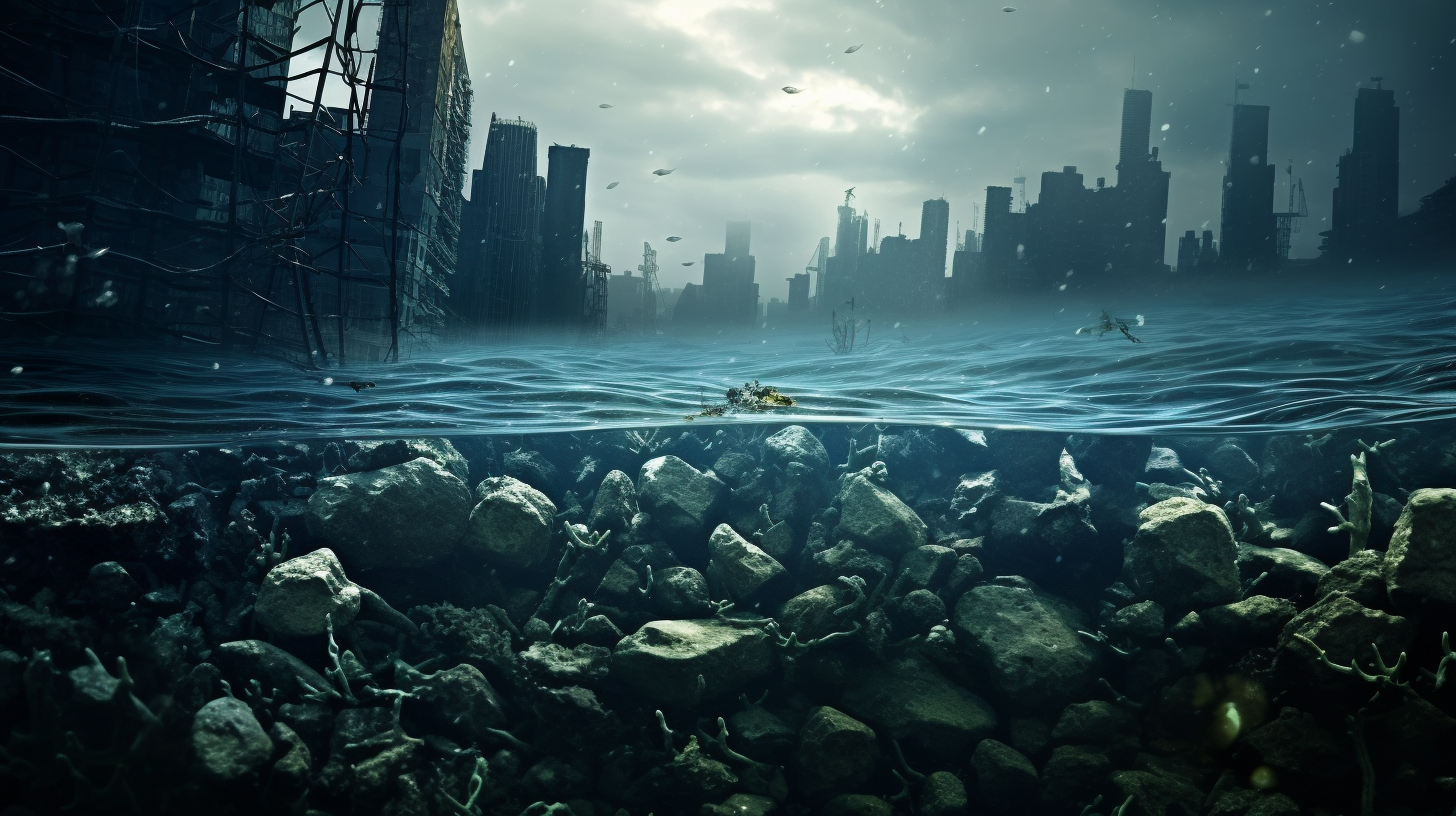In a vision tinted with the hues of aquamarine despair, our once-great cities now lie beneath the relentless advance of a swollen sea. In this new world, a liquid frontier stretches far and wide where skyscrapers and monuments used to scrape the sky. But as our civilization stands at the precipice of peril, an audacious solution has been capsizing the narrative of doomsday: floating cities – the humanity’s defiant embrace to survive in the face of the aquatic apocalypse.
Drifting Metropolises: The New Norm
Imagine New York, its streets awash with the Atlantic, its avenues now canals for gondolas rather than taxis, and the Statue of Liberty, a beacon ascending from the deep, her torch a lighthouse for the boats navigating this new urban archipelago. As the once bustling metropolises turn into eerie underwater landscapes, architects and urban planners convening on reclaimed barges focus their intellect on the construction of buoyant city-states. These are labyrinths of interconnected pontoon systems, artificial islands, and floating infrastructure designed not only to withstand the volatile rage of mother nature but also to sustain life, culture, and economy in the world’s modern-day Atlantises.
‘Rise above,’ they say, as we fashion habitats that rest on the crest of tides yet anchored to the world we’ve lost beneath.’
The Duality of Despair and Ingenuity
As verdant landscapes submerge into abyssal plains, a duality emerges: visceral despair against the backdrop of human ingenuity. Innovators, driven by the indisputable reality that the world will never revert to its former self, have conjured up floating farms that harvest food from the sea, and imperishable energy systems that draw power from the perpetual motion of waves. Above the waterline, society persists in a tessellation of buoyant communities, each a microcosm clinging to life with fervent tenacity.
It is in these waterscapes we find the zenith of our adaptive capacity and the nadir of our negligence – both profound and profounder still.
Aquacultures: Sustaining the Unsustainable
In this aqua-centric existence, our world has contracted to the water’s rhythm, with aquaculture becoming the heartbeat of society. Here, genetically modified coral structures are not just the supporting pillars of our floating enclaves but also the sanctuaries for marine biodiversity that had nearly edged into oblivion. It’s a life aquatic, where humanity’s footprint has transformed to ripples on the water’s surface, indiscrete yet inescapable, a testament to our existential persistence amid the deluge.
Reflections: The Unquenchable Thirst for Change
The reflections on these waterlogged worlds do more than shimmer with the sun’s daily retreat; they mirror the inertia that led to our inundated fate. Despite the dystopian tapestry that we have woven, each attempt to hoist our civilization atop this fluid foundation is a resolute commentary on the unquenchable human spirit.
We float, therefore we are. Yet, even as we embark upon this uncharted odyssey, the question lingers like the haunting depths below: How long can we navigate this aquatic labyrinth before the siren song of finality beckons?
With the aquatic apocalypse upon us, cities afloat offer an eerie yet fascinating glimpse into the future, a future that remains tethered to the vestiges of a world submerged and the specter of irreversible climate change, whispering to us the dire cost of neglecting the environment we promised to protect.
